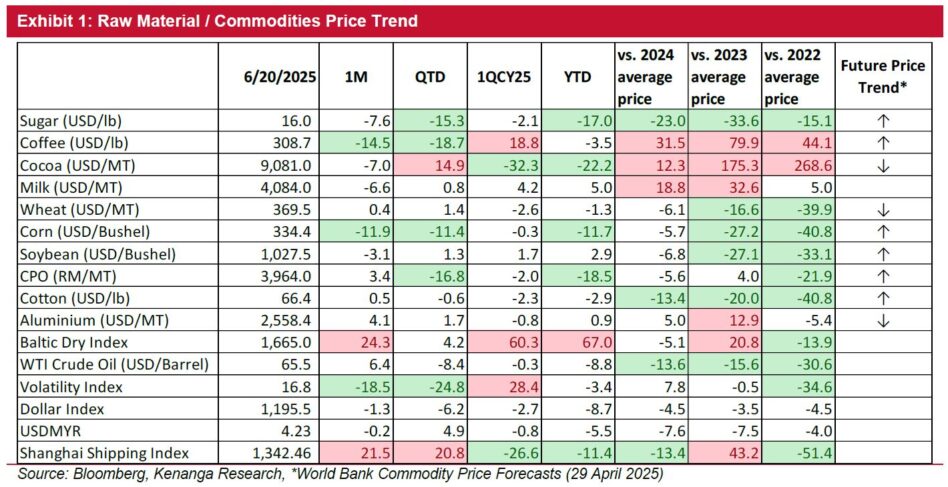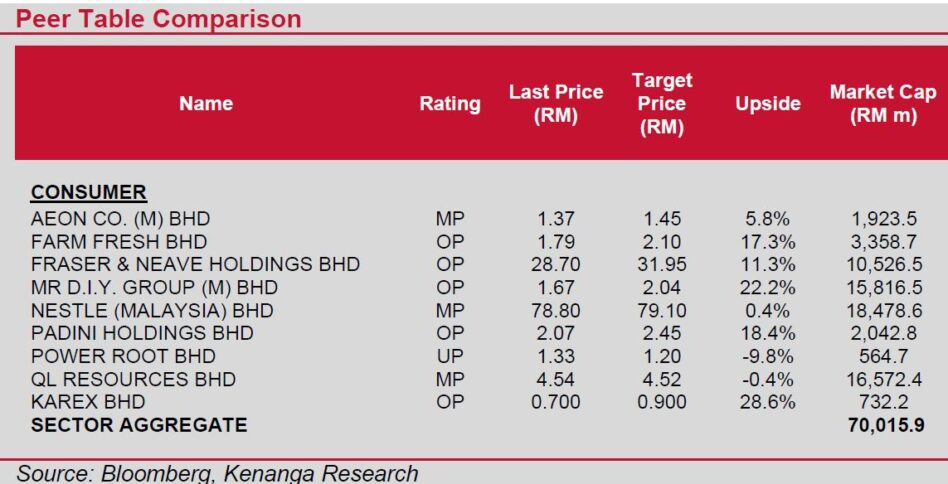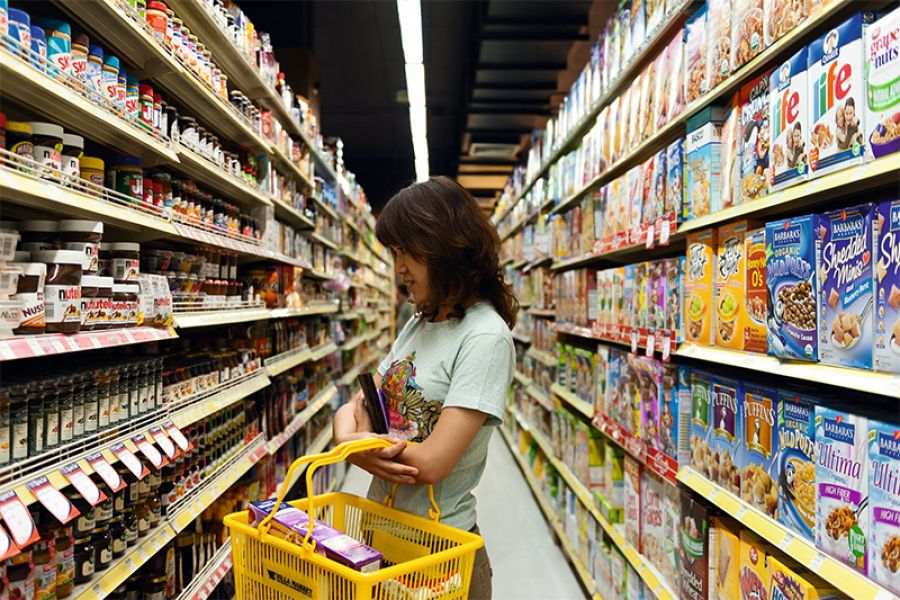ACCORDING to Retail Group Malaysia (RGM), retail sales rose 5.6% year-on-year (YoY) in quarter one of calendar year 2025 (1QCY25), slightly below the market estimate of 5.9% but an improvement from 3.5% in 4QCY24.
“The growth was largely driven by frontloaded festive spending, particularly in the fashion and fashion accessories subsector which surged 12% due to Chinese New Year, earlier Hari Raya, and school holidays,” said Kenanga Research (Kenanga).
Looking ahead, however, RGM has revised down its CY25 retail sales growth forecast to 3.1%, following a downward adjustment to 2QCY25 projection to-1.0% due to normalising seasonal demand and rising retail prices.
Department stores and supermarket-and-hypermarket segments are expected to see short-term pullbacks, while the food-and-beverage segment remains resilient, supported by steady foot traffic at cafés and restaurants.
RGM has kept its 3Q and 4Q retail sales growth forecasts unchanged at +2.8% and +3.5% YoY, respectively.
“It is also noted that recent BNM data has shown a 1.9% decline in real wages between 1QCY20 and 1QCY25, which aligns with our view that rising living costs are prompting lower and middle-income households to prioritise essentials while being cautious with discretionary spending,” said Kenanga.

This is particularly evident among low-income groups, many of whom already allocate over 45% of their income to food.
That said, continued fiscal support including Sumbangan Tunai Rahmah (STR) and Sumbangan Asas Rahmah (SARA) should help cushion household budgets and support essential purchases.
On the cost side, several policy shifts slated for 2HCY25 are expected to shape the operating environment.
The planned RON95 fuel subsidy rationalisation, with details on timing and implementation still unclear, is expected to be rolled out in stages in 2H.
This could result in higher logistics and transport costs, with potential price pass-through especially for lower-margin players.
Importantly, the government’s commitment to maintaining RON95 prices, even in the event of a spike in global oil prices, should help cap immediate fuel-related inflation.
Meanwhile, the upcoming electricity tariff adjustment effective July with the average base tariff adjusted to 45.40 sen/kWh (from 39.95 sen/kWh) may contribute to higher utility costs particularly for commercial users consuming over 200 kWh/month.
While most households i.e. those consuming under 1,000 kWh/month are expected to remain shielded from tariff hikes, there may be indirect pass-through to consumers via wholesalers and retailers.
Still, we believe the direct inflationary impact should remain modest, given that electricity only accounts for 2%–3% of headline CPI.

Other policy-driven cost drivers are also gradually feeding into operating costs, including the minimum wage hike, new 2% EPF contribution for foreign workers and the expanded SST (starting July), which now applies to commercial leasing and rental services.
While this is likely to lift rental costs across the retail space, companies we spoke to such as MRDIY and AEON have indicated that they do not intend to raise retail prices in response.
MRDIY estimates a manageable impact of 1%–1.5% of PAT from rental-related costs, with sufficient margin headroom to absorb the increase, while AEON noted that 10 of its 28 malls will be affected by the new SST.
On a brighter note, the stronger MYR offers some relief on import costs, particularly for players in apparel, retail and food ingredients.
We maintain our neutral stance on the sector. While cost challenges and policy changes remain key areas to watch, we believe these headwinds will be partially offset by continued fiscal support, a stronger MYR and selective resilience in categories such as F&B.
In our view, a sustained sector re-rating would still require:
(i) a more evident pick-up in real consumer spending.
(ii) better earnings visibility, especially among large-cap staples.
(iii) macro clarity on subsidy rollbacks and regional trade sentiment. —July 11, 2025
Main image: ASWAQ




